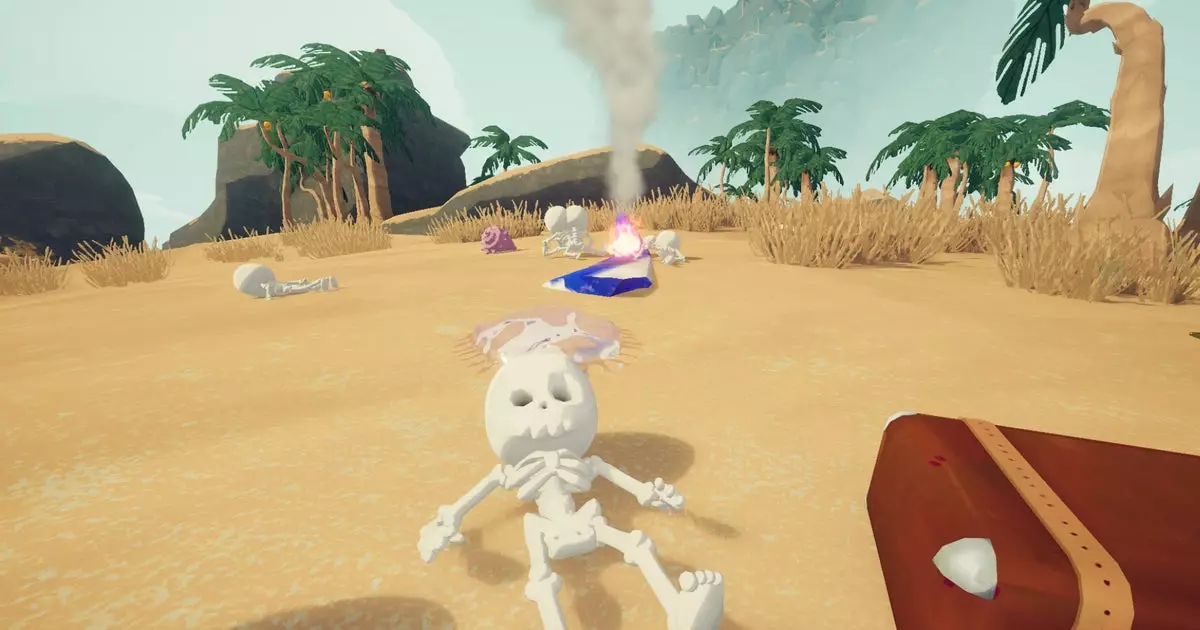Traditional adventure and cooperative games often aim to evoke exploration, camaraderie, and the thrill of conquering towering peaks—both metaphorically and literally. Titles like Peak build an immersive environment where players ascend mountains, test their skills, and savor the dopamine rush of achievement. However, the introduction of a new mod named Everest radically shifts this paradigm, infusing the experience with an unorthodox layer of macabre realism. It beckons players to confront mortality in a virtual space, transforming what could be a light-hearted quest into a haunting reflection of the dangers inherent in exploration.
This mod isn’t just a superficial addition; it fundamentally recasts the way players relate to their virtual surroundings. Instead of the silent, pristine peaks of standard gameplay, Everest populates the environment with skeletons—remnants of fallen players—creating a landscape interwoven with shared history and collective risk. Rather than simply navigating treacherous terrain, players are confronted with the physical traces of others who dared to climb before them, some perhaps never reaching the summit. By doing so, the mod sustains a dialogue about mortality and shared vulnerability, often overlooked in gaming escapism.
Reimagining Connectedness: Death as a Shared Experience
One of the most promising innovations of this mod lies in how it fosters a sense of community rooted in a shared understanding of risk. When players stumble and fall, their death positions are preserved and marked with skeletons, turning the environment into a living histogram of collective adventure—each bony figure representing a story, a misstep, a lesson learned. This creates an intangible bond between players, as each summit is not just an individual achievement but part of an ongoing communal narrative stamped into the landscape.
Interestingly, this approach shifts the typical lone-victim trope often associated with frustrating game failures into a form of morbid camaraderie. Players no longer see their fallen comrades as mere obstacles or failures but as contributors to a morbid tableau that encourages caution, reflection, and respect for the danger involved. Such a feature magnifies the stakes and humanizes the climb, making each risky move resonate more profoundly, especially when the environment is littered with skeletons from over 3,000 different players.
Design Philosophy and Ethical Considerations
Implementing such a darkly humorous and macabre feature requires a delicate balance. On the one hand, it leverages horror and morbidity to deepen the game’s emotional impact and social connectivity. On the other, it risks alienating players who seek purely joyful or light-hearted experiences. The mod’s detailed configuration allows players to customize their experience, adjusting the density of skeletons or disabling the feature altogether if they find it too unsettling.
From a design perspective, this mod exemplifies how extending a game’s core mechanics into darker territories can invigorate the player experience. It prompts questions about the nature of shared spaces, mortality, and the emotional resonance of virtual death. Yet, it also raises ethical considerations about sensationalism versus meaningful reflection. Is this just morbid spectacle, or does it serve as a poignant reminder of human fragility? The creators’ intention seems to channel the latter, transforming hours of virtual exploration into a shared meditation on mortality and resilience.
Breaking the Boundaries of Modding and Community Engagement
The mod’s development also highlights the evolving landscape of player-driven content. Utilizing frameworks like BepInEx and libraries such as UniTask, creators can seamlessly inject complex behaviors into existing games, blurring the lines between official content and community innovation. Steven’s creation exemplifies the power of modding communities to challenge conventions, introducing features that, while unconventional, deepen engagement and provoke meaningful discourse.
Though it’s not intended to be a permanent fixture, the popularity of Everest demonstrates how modders can reshape the narrative potential of games. It underscores the importance of players and developers alike embracing creativity, even when it veers into the bizarre or unsettling. Ultimately, this mod invites players to reconsider what a cooperative climb can symbolize—perhaps transforming it from a straightforward challenge into a profound collective journey through risk, loss, and remembrance.

